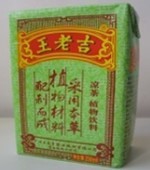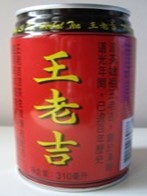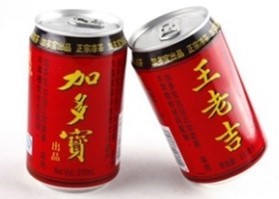Resources
Sep 24,2021
Newsletter n° 19 WHD Insights: TM ∣ Lessons Learned: Ending a Trademark License Agreement in China
Paul Ranjard & Hui Huang, July 21, 2021, first published in INTA Bulletin
Litigation related to joint investment and trademark licensing can be complex and costly, particularly if the parties’ agreement did not foresee and carefully describe what will happen upon termination of their relationship. Two famous cases concerning soft drinks in China provide an interesting illustration: the Red Bull Vitamin Beverage (Red Bull China) Company v. Tencel Pharmaceutical (Thailand) Company case (Red Bull case) and the Guangzhou Pharmaceutical Holding (GPH) v. Dongguan Jia Duo Bao Drink & Food Co., Ltd. (JDB) (Wang Lao Ji case).
In both cases, when the trademark license agreement was terminated, the licensees argued that they should have the right to continue using the trademark, since they had contributed to the value of the business in China throughout the duration of the contract.
In the Red Bull case, the Supreme People’s Court (SPC) stated that the goodwill cannot be separated from the trademark right itself, and Red Bull China, the licensee, was therefore not entitled to claim any ownership on the value acquired by the trademarks.
In the Wang Lao Ji (王老吉) case, the SPC stated that the goodwill attached to the trademark, which may have considerably increased through the implementation of the license agreement, cannot be separated from the ownership of the trademark. However, the SPC also ruled that since the container developed by the licensee had become a source identifier, both the licensor and the licensee should be allowed to use it.
The Red Bull Case
Tencel Pharmaceutical (Thailand) Company (Tencel) is the owner of a number of trademarks registered in China in Class 32 using the words “Red Bull.”
In 1995, Tencel entered into an investment agreement with several other shareholders, including a Chinese company, to establish a joint venture company called Red Bull Vitamin Beverage Company (Red Bull China), in order to produce the beverage in China.

Red Bull sold in China
The agreement provided, in general terms, that “Tencel shall provide … the trademark” and “The trademark is part of the assets of the company.” However, the Chinese trademark was never assigned by Tencel to Red Bull China, which operated under a trademark license.
In 2006, Tencel transferred all its shares in the joint venture and decided not to renew the trademark license. Red Bull China tried to force the renewal of the license but failed. Then, realizing that it would be impossible to force Tencel to renew the trademark license, Red Bull China shifted its strategy. Relying on the terms of the 1995 joint venture agreement, it claimed that the trademark had been transferred to the joint venture.
The Red Bull case confirms the principle that the goodwill attached to a trademark cannot be separated from the trademark right.
Based on this claim, Red Bull China requested the court to declare that all the trademarks were the property of the joint venture or, at least, were co-owned by the joint venture and Tencel. Red Bull China also described its efforts to establish the reputation of the brand in China and argued that it would be unfair to let Tencel reap the benefits of these efforts. Red Bull China made a claim for the payment of more than RMB 3.7 billion (US $570.7 million), corresponding to expenses incurred in promoting the trademarks.
Decisions
Both the Beijing High Court (November 25, 2019) and the SPC on appeal (December 21, 2020) rejected Red Bull China’s arguments and claims.
The courts noted that the language in the joint venture agreement (“Tencel shall provide … the trademark” and “The trademark is part of the assets of the company”) did not mean that the ownership of the trademark was transferred.
The SPC observed that the goodwill built on the trademarks cannot be separated from the trademark right itself and, therefore, Red Bull China was not entitled to claim any ownership on the value acquired by the trademarks, even if such value had been generated through the joint venture.
Key Takeaway—Be Precise
The Red Bull case confirms the principle that the goodwill attached to a trademark cannot be separated from the trademark right, and that, at the end of a license, no compensation is due to the licensee.
The case was complicated by the fact that the trademark license was signed in the context of a joint venture agreement. The Red Bull case illustrates the importance of being precise when drafting a joint venture agreement involving the use of a trademark.
By using such vague terms as “shall provide … the trademark” or “[t]he trademark is part of the assets of the company,” to describe its investment in the joint venture, Tencel opened the door for the joint venture to argue that the ownership of the trademark had, in fact, been transferred.
This argument was, of course, groundless, but precise wording in the joint venture agreement would have avoided the litigation altogether.
If the parties had truly intended for the Red Bull trademark to be part of the assets of the joint venture, they should have specified that the registered capital was to be constituted—in addition to cash—by a certain value attributed to the trademark. In the absence of such precision, the simple terms “provide the trademark” could not be deemed as a formal definition of capital contribution.
Furthermore, with regard to the assignment of a trademark contributing to the registered capital of a joint venture, an easily overlooked rule is that the assignor and the assignee (the joint venture company) must sign and file a joint application for approval of the transfer with the China National Intellectual Property Administration (CNIPA), and the trademark transfer is only complete when the CNIPA approves it. The signature of the assignment contract is insufficient.
[A]n easily overlooked rule is that the assignor and the assignee must sign and file [with CNIPA] a joint application for approval of the transfer.
In a separate case that exemplifies the importance of heeding this rule, Apple paid a high price for having ignored it. When Apple was ready to launch the new iPad tablet in China, it found that the trademark IPAD was already registered by a Chinese company. Apple arranged the purchase of the trademark via a third party for a few hundred thousand Renminbi (tens of thousands of U.S. dollars). However, the assignment was signed, not with the Chinese company owner of the trademark, but with its mother company based in Hong Kong. Furthermore, no application for the approval of the assignment was filed with the Trademark Office. As a result, when the iPad was launched, the mark was still in the ownership of the Chinese subsidiary. At the conclusion of the litigation and re-negotiation that followed, Apple bought the trademark for a much higher price (US $60 million).
The Wang Lao Ji (王老吉) Case
On January 20, 1993, Yangcheng Tonic Factory registered the trademark WANG LAO JI (王老吉) for an herbal tea that it produced and sold in a green container labeled with traditional calligraphy (pictured below).

In March 1995, while continuing to sell its tea in the green packaging, Yangcheng Tonic Factory signed a trademark license agreement with a Hong Kong- based company, Hung To (Holdings) Company Ltd (Hung To). Hung To used the trademark WANG LAO JI together with a different packaging (hereinafter referred to as the RED CAN) (pictured below), for which it obtained a design patent in 1997.

In August 1997, Yangcheng Tonic Factory assigned the WANG LAO JI trademark to Guangzhou Pharmaceutical Holding (GPH), which continued the production and sale of the herbal tea in the green container.
In 1998, Hung To set up a wholly owned subsidiary called Dongguan Jia Duo Bao Drink & Food Co., Ltd. (JDB), which carried on the production and sale of the herbal tea using the RED CAN.
Consequently, from 1998 onwards, the two companies, GPH and JDB, were producing the same product using the same trademark, WANG LAO JI, but were selling the tea in very different containers: the green container and the RED CAN.

GPH

JDB
Starting in 2003, JDB invested heavily in placing WANG LAO JI commercials on CCTV television channels during prime time, and the RED CAN herbal tea became famous in China.
However, in 2011, GPH decided to terminate the license agreement.
JDB proceeded to register and use a different Chinese trademark JIA DUO BAO [加多宝], and sell the herbal tea under the JIA DUO BAO trademark affixed on the RED CAN.
In May 2012, GPH licensed the WANG LAO JI mark to its subsidiary Guangdong Wanglaoji Grand Health Co., Ltd., which started using the trademark with the RED CAN.
Now both companies, GPH and JDB, were using their own trademark, WANG LAO JI and JIA BU DUO, respectively, but on the same RED CAN container (GPH/WANG LAO JI—below right) and JDB/JIA DUO BAO—below left).

In July 2012, JDB sued GPH before the Beijing No.1 Intermediate Court, asking for an injunction to stop the use of the RED CAN design and claiming damages for an amount of RMB 3.096 million (US $478,000). In its response, GPH said the RED CAN design was inseparable from the trademark and sued JDB before the Guangzhou Intermediate Court, asking for an injunction to stop JDB from using the RED CAN design and damages for RMB 150 million (US $23.1 million).
The Guangzhou Intermediate Court, aware of the other case in Beijing, reported to the Guangdong High Court to seek guidance. The High Court referred the case to the SPC, proposing that the Guangzhou Intermediate Court hear the two cases together. In December 2012, the SPC agreed to do so.
Decisions
In December 2014, the Guangdong High Court found that the RED CAN packaging cannot be separated from the WANG LAO JI trademark. Therefore, the RED CAN belongs to the rightful owner of the WANG LAO JI trademark. The court dismissed JDB’s claims and ordered JDB to stop using the RED CAN packaging and to pay damages RMB 150 million (US $23.1 million).
JDB filed an appeal. The SPC heard the case on June 16, 2015, and two years later, on July 27, 2017, rendered its decision in a 70-page judgment. The SPC reversed the decision of the Guangdong High Court and declared that both parties were entitled to use the RED CAN container.
[In the Wang Lao Ji case,] the SPC acknowledged both parties’ contributions ... and affirmed that the packaging, due to its reputation and uniqueness, had generated independent rights.
The SPC echoed the Guangdong Court’s view that the main reason for this dispute was that the trademark license did not foresee the situation at the end of the agreement and did not clarify who would own the rights of the packaging design that was created and used during the life of the agreement.
The SPC acknowledged both parties’ contributions to the value of the packaging and affirmed that the packaging, due to its reputation and uniqueness, had generated independent rights from the trademark itself. The SPC concluded that the litigious packaging did in fact combine the brand awareness of Wang Lao Ji and the reputation and distinctive features acquired by JDB.
The SPC held, without further explanation, that it would be “unfair and maybe detrimental to the public interest” if the RED CAN design was to be awarded to either side. Therefore, the SPC declared that both parties were entitled to use the RED CAN design and dismissed both claims.
Key Takeaway—Be Precise!
The message to practitioners is ultimately the same as for the Red Bull case: carefully draft contract clauses to avoid litigation.
Apart from being about soft drinks, the Wang Lao Ji and Red Bull cases share an important commonality: the plaintiff, the ex-licensee, claimed that even if the license was terminated, the success of the brand was due to its efforts and should, therefore, be rewarded.
In the Red Bull case, the licensee claimed a large amount of damages, trying to base its claim on vague language in the joint venture agreement, but mainly building its argument around its investment in the development of the brand and the unfairness of not obtaining a retribution. In the Wang Lao Ji case, the licensee claimed ownership on the packaging that it created. This was a stronger argument as the licensee had indeed created and developed a specific image for the packaging.
Both the Guangdong High Court in the Wang Lao Ji case, and the Beijing High Court and SPC in the Red Bull case, held the same reasoning: the goodwill attached to the trademark, which may have considerably increased through the implementation of the license agreement, cannot be separated from the ownership of the trademark. Therefore, once the license is terminated, all the value remains with the trademark owner and no compensation is due.
And yet, this is what the SPC decided in its Wang Lao Ji decision allowing the ex-trademark licensee to continue using the same packaging but with a different trademark—an unsatisfactory outcome for both sides.
Given that trademark ownership remains with the licensor at the end of the license agreement, it is highly recommended to stipulate in the agreement if the licensor and/or licensee shall bear the cost of advertisements and promotion and who will benefit from such promotion. This will prevent the licensee from requesting compensation and claiming that the trademark has gained value due to its own effort.
Further, it is possible to stipulate that another sign belonging to the licensee may be used together with the licensed trademark. In such cases, at the end of the license agreement, the licensee may continue to use its own trademark, which has benefited from the promotion during the life of the agreement. This may arise in situations where the licensee has a stronger position in the negotiations with the trademark owner.
Good examples of this approach may be found in the car manufacturers Dongfeng东风/Citroën and Huachen华晨/BMW. In both instances, the companies use the Chinese brand alongside the foreign brand. Therefore, should the relationship between the Chinese party and the foreign party come to an end for any reason, the Chinese party may continue using its own name.
These Chinese names, Dongfeng and Huachen, are registered trademarks enjoying the full range of rights attached thereto. This was not the case for the RED CAN. The RED CAN design was not, from the outset, an independent “source indicator” of the origin of the products in the same way as the names Dongfeng and Huachen. The RED CAN only became a source indicator after long-term use and could only indicate the trademark WANG LAO JI as the source.
This leads to the same conclusion as in the Red Bull case: if the owner of the WANG LAO JI trademark, when signing the license agreement, had specified that all rights attached to the trademark, including the RED CAN, were to return to the licensor at the termination of the agreement, litigation might have been avoided.
